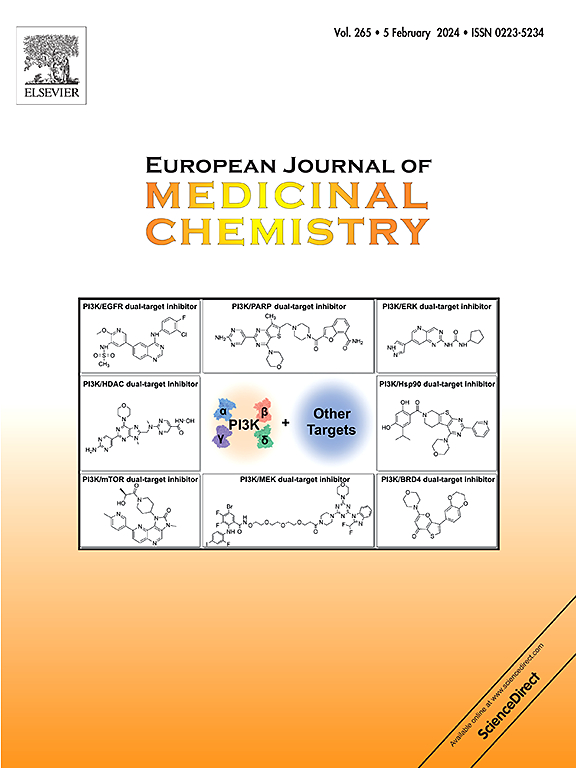Indo–Gem: An activatable theranostic prodrug, a “Turn–On” fluorescent probe, and a targetable imaging agent in the zebrafish gallbladder system
IF 6
2区 医学
Q1 CHEMISTRY, MEDICINAL
引用次数: 0
Abstract
Theranostics are crucial in both cancer diagnosis and targeted drug delivery, as they enable the simultaneous detection and treatment of disease within a single molecular or conjugated platform. However, theranostics is still facing challenges like real-time tracking for “where” prodrugs are activated in vivo, which poses a significant problem for molecule development. Organ-specific action to inspire the creation of innovative disease–curing technologies that are both accurate and efficient is still an underestimated task. We herein showcase the novel serendipitous gallbladder–targeting indole–based prodrug Indo–Gem for precise imaging-guided cancer therapy. Indo–Gem was prepared by an indole–malononitrile (dye) moiety, attached to the selected parent drug Gemcitabine via a disulfide cleavable linker. Indo–Gem is triggered by DTT with 27–fold fluorescent enhancement at pH 7.4, registering within 21 min. Unlike the most ignored adverse effects in prodrug activation, this indole–based dye targeting in a specific organ region of a zebrafish model via a combination of imaging ability and drug release. This is the first case that employs an indole–based moiety in prodrug design without any use of targeting ligands; the profound success of Indo–Gem and the well–defined mechanism suggest that the indole might serve as a scaffold to create novel therapeutic prodrugs with improved drug potency in future drug development.

印度宝石:一种可激活的治疗前药,一种“开启”荧光探针,以及一种斑马鱼胆囊系统中的靶向显像剂
治疗学在癌症诊断和靶向药物递送中都是至关重要的,因为它们可以在单个分子或偶联平台内同时检测和治疗疾病。然而,治疗学仍然面临着诸如前体药物在体内“何处”被激活的实时跟踪等挑战,这给分子开发带来了重大问题。针对器官的行动,激励创造既准确又有效的创新疾病治疗技术,仍然是一项被低估的任务。我们在此展示了用于精确成像引导癌症治疗的基于吲哚的新型随机胆囊靶向前药Indo-Gem。Indo-Gem由吲哚-丙二腈(染料)部分制备,通过二硫可切割连接剂连接到选定的母药吉西他滨。Indo-Gem由DTT触发,在pH 7.4下具有27倍荧光增强,在21分钟内记录。与前药激活中最被忽视的副作用不同,这种基于吲哚的染料通过成像能力和药物释放的结合靶向斑马鱼模型的特定器官区域。这是第一个在前药设计中使用吲哚基片段而不使用任何靶向配体的病例;Indo-Gem的巨大成功和明确的机制表明,在未来的药物开发中,吲哚可能作为一种支架来制造具有更高药物效力的新型治疗前药。
本文章由计算机程序翻译,如有差异,请以英文原文为准。
求助全文
约1分钟内获得全文
求助全文
来源期刊
CiteScore
11.70
自引率
9.00%
发文量
863
审稿时长
29 days
期刊介绍:
The European Journal of Medicinal Chemistry is a global journal that publishes studies on all aspects of medicinal chemistry. It provides a medium for publication of original papers and also welcomes critical review papers.
A typical paper would report on the organic synthesis, characterization and pharmacological evaluation of compounds. Other topics of interest are drug design, QSAR, molecular modeling, drug-receptor interactions, molecular aspects of drug metabolism, prodrug synthesis and drug targeting. The journal expects manuscripts to present the rational for a study, provide insight into the design of compounds or understanding of mechanism, or clarify the targets.

 求助内容:
求助内容: 应助结果提醒方式:
应助结果提醒方式:


